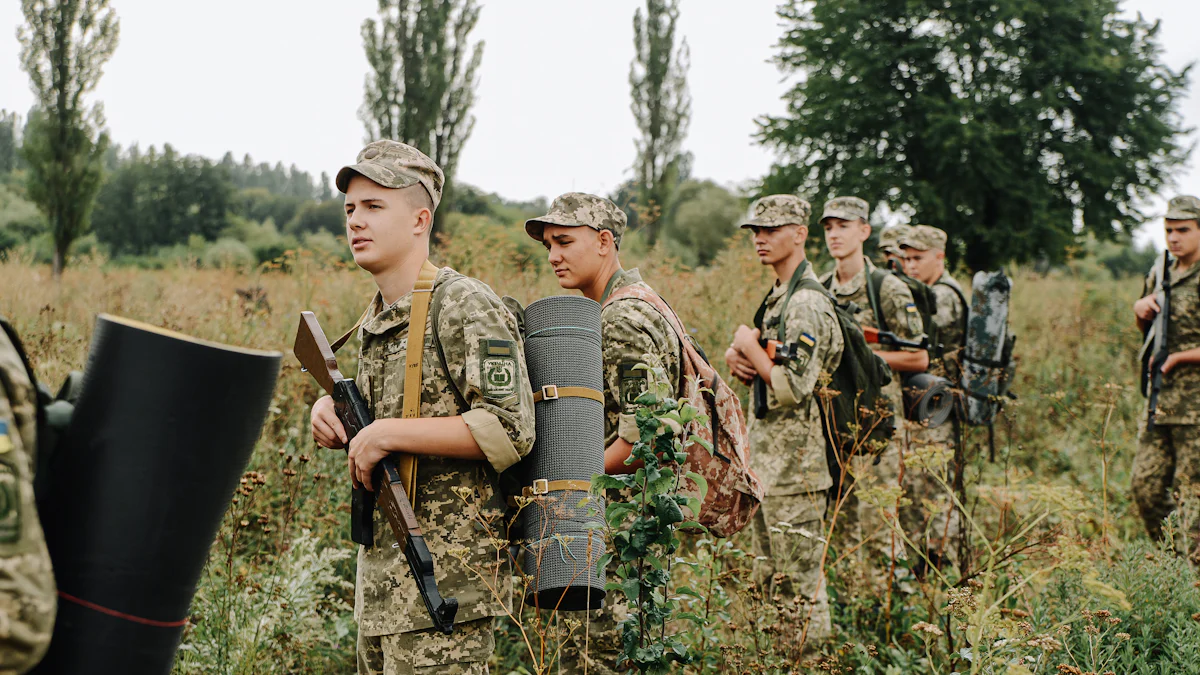Essential Guide to Wearing Military Uniforms
Essential Guide to Wearing Military Uniforms

We are professional in making all kinds of military camouflage fabrics, woolen uniform fabrics, workwear fabrics, military uniforms and jackets for more than fifteen years. In order to meet the needs of different customers, we could do the special treatment on the fabric with Anti-IR, waterproof, anti-oil, Teflon, anti-dirt, Antistatic, Fire retardant, Anti-mosquito, Antibacterial, Anti-wrinkle, etc .
Welcome to contact us without hesitation !
Components of Military Uniforms
Understanding the components of military uniforms is essential for maintaining a professional appearance. Each piece serves a specific purpose and contributes to the overall functionality and symbolism of the uniform.
Headgear
Types of headgear and their significance
Headgear in military uniforms varies by branch and occasion. Common types include berets, caps, and helmets. Each type holds significance, representing rank, unit, or specific duties. For instance, berets often signify elite units, while helmets provide protection during combat. Wearing the correct headgear reflects your role and responsibilities within the military.
Upper Body Garments
Shirts, jackets, and insignia placement
Upper body garments in military uniforms include shirts and jackets. These garments often display insignia, which indicate rank and achievements. Proper placement of insignia is vital. Align them according to your branch’s guidelines to ensure they are visible and correctly positioned. This attention to detail showcases your accomplishments and adherence to military standards.
Lower Body Garments
Trousers and skirts: fit and length
Trousers and skirts in military uniforms must fit well and be the appropriate length. Trousers should rest comfortably at the waist and fall straight to the shoes, typically two inches from the floor. Skirts should follow similar guidelines, ensuring modesty and ease of movement. Proper fit enhances your professional appearance and allows for unrestricted mobility.
Military uniforms are more than just clothing; they symbolize your commitment and professionalism. By understanding and adhering to the components of your uniform, you uphold the values and traditions of your service branch.
Regulations and Guidelines
Overview of regulations for each military branch
Each military branch has its own set of regulations regarding uniforms. These rules dictate how you should wear your uniform, including the placement of insignia and the types of accessories allowed. For example, the Army, Navy, Air Force, and Marine Corps each have unique guidelines that reflect their traditions and operational needs. Familiarize yourself with your branch’s specific regulations to ensure compliance and demonstrate your commitment to military standards.
Wearing your military uniform correctly is crucial for upholding military standards. It reflects your discipline and professionalism. Remember these key points:
- Components: Each part of the uniform, from headgear to footwear, plays a vital role in your appearance.
- Fit: Ensure your uniform fits well. Accurate measurements and timely alterations are essential.
- Regulations: Familiarize yourself with branch-specific guidelines to maintain compliance.
To keep your uniform in top condition, regularly clean and press it. Trim loose threads and polish your shoes. Adhering to these guidelines shows respect for your service and pride in your role.